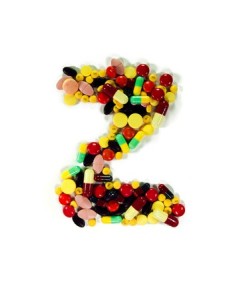Nightmares with Z-Drugs

The FDA announced it will require that a boxed warning be added to the prescribing information and the Medication Guides for certain prescription insomnia medications because of the dangers of complex sleep behaviors such as “sleepwalking, sleep driving and engaging in other activities while not fully awake.” Some deaths have been reported. “These behaviors appear to be more common with zopiclone (Lunesta), zaleplon (Sonata), and zolpidem (Ambien, Ambien CR, Edluar, Intermezzo, Zolpimist) than other prescription medicines used for sleep.” Additionally, the FDA will require a “Contraindication,” their strongest warning to avoid using these medications in patients who previously experienced an episode of complex sleep behavior while taking them. All three so-called z-drugs—zaleplon, zolpidem and zopicione—are currently Schedule IV controlled substances (as are benzodiazepines), ostensibly with a lower risk of abuse relative to substances in Schedule III.
Serious injuries and death from complex sleep behaviors have occurred in patients with and without a history of such behaviors, even at the lowest recommended doses, and the behaviors can occur after just one dose. These behaviors can occur after taking these medicines with or without alcohol or other central nervous system depressants that may be sedating such as tranquilizers, opioids, and anti-anxiety medicines.
The New York Times quoted Dr. Irene Rosen, a professor of clinical medicine at the University of Pennsylvania, and former president of the American Academy of Sleep Medicine as being surprised the warning is just coming out now. “This is something I’ve been telling my patients for the last 15 years, and in the sleep community this is well known. And I’d like to think we’ve done a good job putting the news out there, that these drugs have some risks.” These “z-drugs” are not on the hospital formulary at the University of Pennsylvania because of their association to sleepwalking, falls and other concerns. The overall risks are not well-known, as incidents are rare or rarely reported. The FDA said:
These cases included accidental overdoses, falls, burns, near drowning, exposure to extreme cold temperatures leading to loss of limb, carbon monoxide poisoning, drowning, hypothermia, motor vehicle collisions with the patient driving, and self-injuries such as gunshot wounds and apparent suicide attempts. Patients usually did not remember these events. The underlying mechanisms by which these insomnia medicines cause complex sleep behaviors are not completely understood.
About one in eight people with sleeping problems report using these drugs. Among individuals of retirement age, more than 33% report taking a sleeping aide. “Prescriptions for sleeping pills grew to more than 20 million in 2010 from 5.3 million in 1999, according to national estimates.” The FDA announced prior concerns with these insomnia medications in May of 2013 (approved lower recommended doses for zolpidem) and May of 2014 (risk of next-morning impairment with zopiclone; lowered recommended dose). “We are continuing to monitor the safety of insomnia medicines and will update the public as new information becomes available.”
A study published in JAMA Internal Medicine, “Assessment of Patterns of Potentially Unsafe Use of Zolpidem,” found that over ¾ of zolpidem (Ambien) users do not follow FDA recommendations to reduce the risks of side effects and drug dependency. The following three recommendations were given by the FDA when taking zolpidem. First, only use it short-term because long-term use leads to a loss of effectiveness. Second, use lower doses (5mg) for women and adults 65 and older due to higher blood concentrations, which can be 45% to 50% higher. Third, because of increased risk when combined with other central nervous system (CNS)-depressant drugs, limit their combined use.
Mad in America reported that the researchers found that 77.4% were not observing 2 or more of the recommendations. Women were almost twice as likely to use zolpidem and 64% of adults 65 and over were taking higher than recommended doses. Further, 68% used zolpidem for over 60 days and among those who used it for a sustained time period, 41% were also taking another CNS-depressant. “26% combined zolpidem with an opioid.”
These findings are especially concerning since zolpidem use results in more emergency department visits due to adverse effects than any other psychotropic drug. The findings also suggest women are at higher risk for adverse effects, given their higher rates of zolpidem use and that women’s bodies take longer to clear the drug from their system, resulting in 45% higher blood concentrations.
Z-drugs emerged in the late 1980s and early 1990s when zopicione (Imovane) and zolpidem (Ambien) were approved. In 1999 the FDA approved zaleplon (Sonata) and in 2005 it approved zopicione (Lunesta). In 2012 the FDA approved Intermezzo, a half-strength dose of zolpidem for middle-of-the-night insomnia. They are categorized as nonbenzodiazepines, acting as specific agonists of the GABAA receptors, while lacking the fused benzene and diazepine rings of benzodiazepines. Common adverse effects include drowsiness, amnesia, paresthesias (a burning or prickling sensation), abnormal vision, dizziness, headache, hangover effect, rebound insomnia and confusion.
A 2012 study published in BMJ Open, the BMJ’s Open Access Journal, found that any patient prescribed a hypnotic drug like zolpidem had elevated hazards of dying compared to those who were not prescribed hypnotics. Receiving a hypnotic prescription was associated with greater than a threefold increased of death, even when prescribed less than 18 pills per year. “Perhaps the most striking finding was that an increased hazard for death was present even in the lowest tertile of hypnotic use, such that hypnotic drugs were associated with a 3.6-fold increased risk of dying for patients using <18 hypnotic pills per year.” Commenting on the study, Dr. Peter Breggin said the authors drew no firm conclusions on how the medications caused increased mortality. He believed the impaired judgment caused by all sedating drugs played a role in the death rates. “Because of impaired judgment, these drugs often lead to unintentional overdose.” The BMJ study concluded:
Excess mortality is associated with hypnotic use. Hypnotic users had more prevalent disease of many sorts than non-users before hypnotics were ordered. However, the consistent results across varying levels of comorbidity and the persistent elevated hazards within strata of users and non-users matched for comorbid diagnoses strongly suggest that neither the level of individual health nor the presence of particular categories of comorbidity explains the bulk of the hazard associated with the use of hypnotic medications.
A 2013 study published in the Journal of Medical Toxicology, “The Clinical and Forensic Toxicology of Z-drugs,” found that z-drugs had few distinct advantages over benzodiazepines, “and in many ways they have similar adverse and toxic effects, especially zopiclone [Imovane].” Adverse drug effects and toxicity were more likely with polydrug use in therapeutics and when co-ingested with psychoactive substances in overdose. Their short half-lives “make them seldom found substances in forensic cases, both in drug-related deaths as well as in drug-facilitated crimes.” There have been several reported fatalities of zaleplon with other drugs, but none have been attributed solely to zaleplon. “This may represent lower zaleplon use or difficulties in measuring zaleplon levels due to its ultra-short half-life and rapid antemortem [before death] metabolism.”
A 2017 review of major adverse events with benzodiazepines and z-drugs in epidemiological research for Drugs in R&D found there was sufficient, converging evidence to establish a strong causal link between benzodiazepine/z-drug use and motor vehicle accidents, falls and fractures as a consequence of psycho-motor impairment. A strong causal link between benzodiazepine/z-drug use and dementia could not be concluded because of insufficient and conflicting evidence with both epidemiologic and experimental studies. “As doubt and controversy persists regarding many of these adverse harm associations, further research is required to reconcile the evidence base for the sake of optimizing medication safety in the population.”
Nevertheless, the FDA has been progressively moving towards the caution of black-boxed warnings for z-drugs and the “Contraindication” for a number of years. So be forewarned while you wait for science to sort out the contradictions with z-drugs. Your insomnia problem could potentially become a nightmare.

